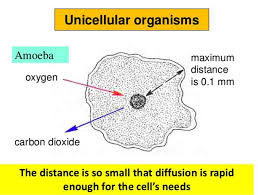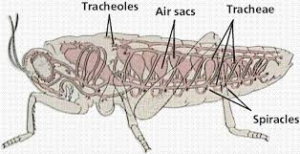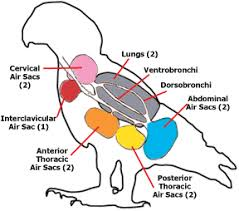Introduction
Respiration is described as the process of releasing energy from food that occurs inside cells. The process requires oxygen intake, which is used to burn food while eliminating waste products (CO2 and water) from the body. This process is of great importance in life because it provides the energy required in all life processes for survival.
Through breathing, organisms obtain oxygen. Respiration, on the other hand, is a complex process involving breathing and oxidation of food in cells to provide energy. Breathing is a physical process, while respiration is a biochemical process. Therefore, organisms have developed special respiratory organs that are necessary for food oxidation to release energy.
Respiratory Organs
The respiratory system is all about the gas exchange with the surrounding. Different animals possess different respiratory organs, for instance:
- Fish have gills.
- Mammals, birds, and reptiles use lungs.
- Amphibians respire through the skin.
Plasma membrane.
Exchange of gases in unicellular organisms such as amoeba occurs through the cell surface. This happens through the absorption of oxygen from the environment (water or air) and giving out of carbon dioxide through the plasma membrane by the process of diffusion.

Body wall/skin.
Exchange of gases in earthworms, leeches, and tapeworms occurs through the skin. The skin is specially designed to be thin and moistened with a lot of blood cells spread on it. The exchange of gases occurs at these blood cells called capillaries. Such organisms die of suffocation in case the skin is dried up.
Some organisms employ more than one organ for respiration, e.g., the amphibians who breathe through gills while still tadpoles. The mature frogs use lungs mainly to breathe and also use skin for gaseous exchange.
Tracheal system.
Gaseous exchange in insects such as grasshoppers and cockroaches takes place in tubes known as tracheae.
Through spiracles, air enters the tracheal tubes, thereby diffusing into body tissues to reach every cell in the body. The waste product, CO2, goes through the tracheal tubes to exit the body by the spiracles.

Gills
Special organs known as gills are mostly used by aquatic animals such as fish. Gills are the projections of the skin that are necessary for the use of oxygen dissolved in water. Gaseous exchange is aided by the blood vessels in the gills.
Fish gulp water through their mouths further pumping it over the gills, where it passes into the gill chambers through gill slits. The filaments in the gill chambers absorb oxygen from the water, replacing it with carbon dioxide formed. The water exits through the gill openings, and the process is repeated over and over.
Lungs.
Gaseous exchange in birds, mammals, and reptiles happens in special respiratory organs called lungs which are located in the chest cavity. The lungs excess the environment through a series of small openings and tubes.
